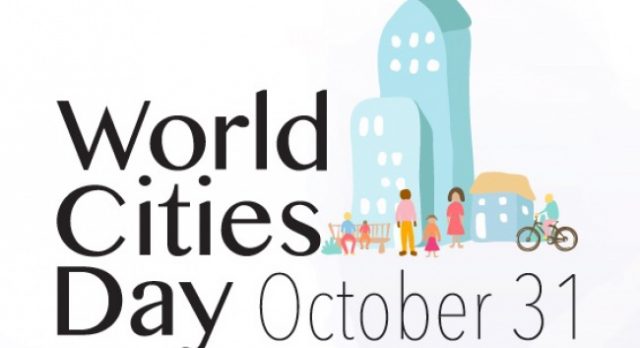
31 Oct Lessons from Urban October: Building a resilient future for cities
On World Cities Day where we mark the end of Urban October, it is a moment to reflect on the pull of cities on humankind. Urban October was developed to raise awareness, promote participation, generate knowledge and engage the international community towards the New Urban Agenda, in 31 days of promoting a Better Urban Future. Our oldest cities date more than 10,000 years. Urban living has a long history and cities have been born, grown, decayed, extinguished, suffered disease, wars and continually evolved. This year has been a watershed of sorts in many ways. Even those of us privileged enough to work from home and continue with our daily lives, have not been immune to the effects of the virus, whether in terms of health, mental health, loss of loved ones or other such effects. For the vast majority of the urban poor, this has been a devastating period in terms of livelihood, health and mobility.
As cities are trying to bounce back to some normalcy, they are seeing a second wave of COVID 19, which many are now able to deal with better as we have more information. Of course, we are also seeing “pandemic fatigue” where people are trying to grab at normalcy too much and too soon. Experts warn us that in the coming years, we are going to see many more pandemics.
It has been said that the battle against climate change is going to be won or lost in cities. I suspect the same will be said about pandemics. Cities are hubs of economic and social growth as well as complexity and all of us who see ourselves as urbanists are becoming increasingly aware that resilience must become a way of life for cities and city dwellers. The past eight months have seen many conversations about this challenge and deliberated on solutions.
The Executive Director of UN Habitat, in her address on World Habitat Day, emphasised that
“Housing is now widely recognised as a frontline defence against COVID-19, with residents across the world being told to stay at home and wash their hands. But these simple measures are impossible for the 1.8 billion people living in inadequate housing conditions, informal settlements, overcrowded homes, homelessness, and unstable housing conditions.”
The pandemic has highlighted that urban services for the most vulnerable and excluded must be prioritised, not only during the pandemic but to help us deal with any future pandemics. Equity and justice must be the bulwark of cities and city planning. Poor housing and the lack of basic services, particularly WASH services have exacerbated the impact of COVID 19 on the urban poor.
Another major learning of the pandemic is that the work of care must be recognised and valued if we aim for more caring cities. As expected, the burden of work of care has been shouldered by women, not only in their homes, but also as health care workers. It is estimated that nearly 70% of the health care workers globally are women. It is the work of care that has enabled us to weather this extremely uncertain period, and when things get back to a sense of normalcy, we cannot allow this work to be undervalued.
Maybe 2021 will see some success with several vaccines on the anvil. While we may heave a collective sigh when we can step out again without masks, we must not go back to business as usual. The process of urbanisation in many cities has been flawed, problematic and unequal. This is an opportunity for cities and all stakeholders to envision improved cities that are resilient enough to deal with crises; and resilience is deeply compromised by inequality. Let’s not just build back better, but move forward with a renewed sense of purpose to not only address inequities in our cities, but make compassion the bulwark upon which we build and govern them.

